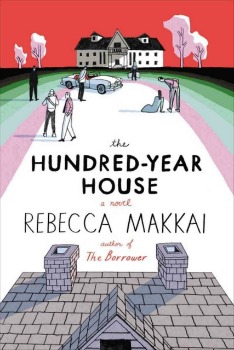'The Hundred-Year House' Is Passionate And Riveting Literary Mystery
By Jaclyn Bauer in Arts & Entertainment on Aug 4, 2014 3:40PM
 Rebecca Makkai’s second novel The Hundred-Year House is a book of intellect and mystery that fuses together the genres of thriller and literary fiction with profundity and grace.
Rebecca Makkai’s second novel The Hundred-Year House is a book of intellect and mystery that fuses together the genres of thriller and literary fiction with profundity and grace.
Told in reverse chronological order, Makkai takes readers on a journey through 100 years and four generations of the inhabitants of Laurelfield, an estate in Illinois. Laurelfield is said to be haunted by the original owner Violet’s ghost. Violet, they say, committed suicide: whether by hanging, by starving herself, or by jumping from the attic. No one can say with surety, but it is agreed by most that her spirit remains.
Beginning from the shifting perspective of Zilla, Violet’s great-grandaughter, and Zilla’s husband Doug, Makkai sets us out at the turn of the 21st century directly antecedent to the Y2K scare of 1999. Zilla is a professor at a local college, while Doug is in the midst of writing a monograph on a poet, Edwin Parfitt, who stayed at Laurelfield when it was an artists residence in the early 1900s. From lies to love, and scandal to madness, Makkai allows readers to access the deepest regions of both Zilla and Doug’s mind and heart.
From 1999, we jump back to 1955, when Zilla’s mother Grace lived at Laurelfield with her abusive and reckless husband George. The same themes seem to reappear: love, lies, scandal and madness. In 1929, when we meet the artists who were in residence at Laurelfield, among them Edwin Parfitt, these themes reemerge once more. Finally, Makkai takes us back to 1900 and introduces us to the elusive Violet in all of the love and madness that surrounds her.
The novel leaves readers questioning numerous aspects at its end. There is, however, a deep sense of satisfaction as layers upon layers of mystery are slowly peeled away to reveal truths that at the novel’s outset, the reader didn’t even think to question. Through the telling of each generation, one cogent story implodes into an array of tangents that are chaotic, passionate and absolutely riveting.